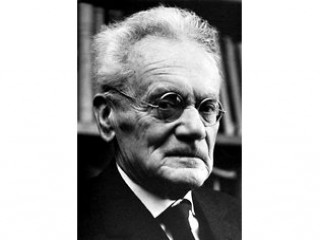
Karl Von Frisch biography
Date of birth : 1886-11-20
Date of death : 1982-06-12
Birthplace : Vienna, Austria
Nationality : Austrian
Category : Science and Technology
Last modified : 2011-09-01
Credited as : Zoologist, ethologist, bees studies, Nobel Prize in Physiology or Medicine
The Austrian zoologist Karl von Frisch is noted for his studies of insect behavior and sensory physiology. His most famous discovery was that honeybees communicate by waggle dancing.
Karl von Frisch was born on November 20, 1886, in Vienna, the son of a university professor. He displayed an early interest in animals, which his family encouraged. His uncle, Sigmund Exner, the leading authority on insect vision at the time, channeled Frisch's earliest professional endeavors into a study of vision in honeybees.
Frisch studied under Richard von Hertwig at the University of Munich and received his doctorate in zoology in 1910. Early in his career he began to make important contributions to the analysis of animal behavior. It is said that every successful scientist has a small number of personal tools with which he levers discoveries out of nature, and Frisch had two in which he attained great mastery. The first was the repeated exploitation of the passage of honeybees from nest to flowers and back again, a complex sequence of behavioral events that is nonetheless easy to manipulate and monitor. The second was the method of training, developed by Ivan Pavlov, by which Frisch associated the stimuli to be studied with a subsequent reward of food. Animals trained in this fashion respond sharply to odd stimuli that they otherwise ignore, thus revealing ultimately their sensory capacities.
Using the training method, Frisch confounded C. von Hess in their famous debate on color vision in insects. He demonstrated the ability of fish to hear and of insects to perceive polarized light. Over the years Frisch sketched out in great detail the sensory physiology of the worker honeybee. In 1945 he made the astounding discovery that honeybee workers communicate symbolically about the location of food sources such as fields of flowers. They accomplish this deep within the hive by means of the "waggle dance," in which the entire body is vibrated as the bee runs through figure-eight patterns on the vertical surface of the comb. The middle part of the figure, the "straight run," provides the information; its angle with reference to the vertical indicates the angle the follower bees must take with reference to the sun when they leave the hive; and its duration indicates the length of the trip. This mode of communication is the most complex ever discovered in invertebrate animals.
Frisch was director of the zoological institute in Munich from 1925 until World War II and again from 1950 to 1958. He received numerous honors, including the Balzan Foundation Award in 1963 and foreign memberships in the United States National Academy of Sciences and the Royal Society of London. He, along with Konrad Lorenz and Nikolaas Tinbergern, shared the 1973 Nobel Prize for physiology or medicine. In an article in Science regarding the Nobel Prize, Frisch was praised for teaching the world that human nature is "subject to the principles that mold the biology, adaptability and the survival of other organisms."
About his own work, Frisch philosophically wrote in A Biologist Remembers, "The layman may wonder why a biologist is content to devote 50 years of his life to the study of bees and minnows without ever branching out into research on, say, elephants, or at any rate the lice of elephants or the fleas of moles. The answer to any such question must be that every single species of the animal kingdom challenges us with all, or nearly all, the mysteries of life." Frisch died June 12, 1982, in Munich, Germany.
















